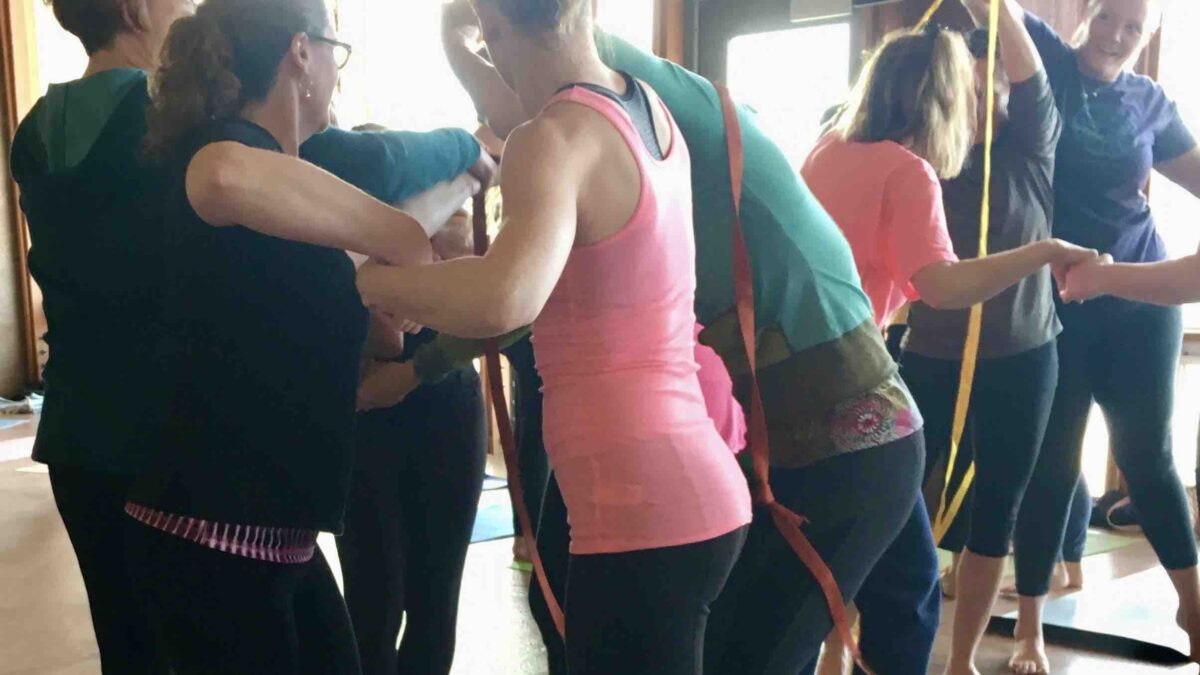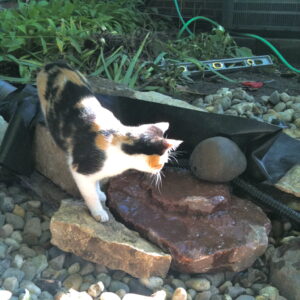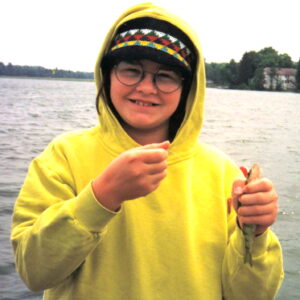My brother and I agree that our trip to central Europe last May made the 20th anniversary of the Berlin Wall’s fall more meaningful than I remember it being even when it happened. One Prague memory I keep going back to as I listen to reports of the celebration is the sculpture Quo Vadis, by the edgy Czech artist, David Cerny.
We visited about a dozen of the famous Cerny sculptures, but the most difficult to find was in the back garden of the German Embassy. As we made our way along a deserted, wooded dirt road, a German woman had followed us and stopped to stare into the lush gardens. As she overheard our conversation and realized how little we knew about the sculpture’s significance, she asked if we knew what it was about. At our vague, “sort of,” she told us the story; the emotion in her voice riveted our eyes to the empty garden beyond the iron fence.
Her words painted a picture of a different time when a huge crowd, 4,000 people who had climbed this wall between Soviet-ruled Czechoslovakia and the free land of the West German Embassy.
In September 1989, many East Germans were able to travel legally behind the Iron Curtain when East Germany closed the border again. They did not want to return to East Germany where they had been isolated since the end of World War II. Beginning with just one person, 4,000 East Germans climbed the wall and camped out in the garden of the Embassy. East Germany wanted them deported, but West Germany knew such action would soil the country’s reputation. It was a time of high tension and fear, and contributed to what Gorbachev called the “German Problem.”
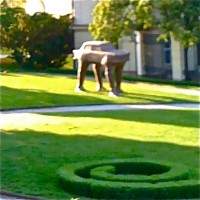
- Quo Vadis, German Embassy, Prague
How much courage such an act would require I can only guess. My brother says the woman’s story is one of his fondest memories of traveling. She felt left out of history as she was studying in England while the face of Europe was changed profoundly.
We gazed at Cerny’s sculpture of an East German Trabant; many such cars were abandoned on Prague streets late in 1989. Instead of resting on wheels, the car has four human legs, representing the 4,000 East Germans who scaled the Embassy wall and helped bring about the Velvet Revolution and toppled the Berlin Wall.
Remembering Prague is humbling on this 20th anniversary of the fall of the Wall. I’m grateful to have heard history from Czech, Greek, Zambian and Turkish viewpoints. I am awed by the courage and power of people passionate about their causes.
I’ve often quoted Margaret Mead, “Never doubt that a small group of thoughtful, committed citizens can change the world. Indeed, it is the only thing that ever has.” The story we heard leaning against the back wall of the German Embassy’s garden is a perfect illustration of Mead’s meaning.
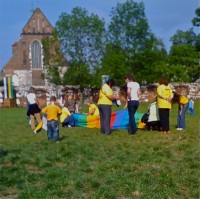
Children Play in Wroclaw, Poland
The global problems we faces are daunting; but if each of us can find a fraction of the courage of those 4,000 East Germans, I’m sure we can tear down the walls and–
On this November 9, 2009, I plan to find the courage to do my small part in changing the world, one step at a time. Will you help me tear down the walls and change the world?







